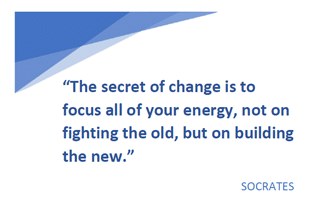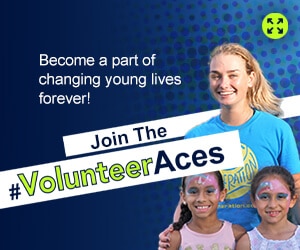By Robert Hollis
I’ve been involved in USTA Florida since the 1970s, when I was a young teaching professional. One thing is certain: the success of USTA Florida is not connected to my leadership, or any single person. It’s a direct result of our ability to adapt and change.
It’s no secret that Florida has a reputation as a disrupter in our association. We try a lot of new things. Some work. Some don’t. I’m proud that we have staff and volunteers who are not afraid to fail. It’s probably the main reason I’ve been involved in the organization as long as I have.
If you have been involved in our organization during the last 5-10 years, you have seen how much our organization has changed and worked with communities to bring forward new approaches to getting more youth in the game at the beginner level.
Since 2010, the USTA Florida Section Foundation has given more than $1 million in grants directly to providers across the state. These grants have funded everything from age-appropriate equipment to tennis court construction and a wide range of recreational programs that serve all demographics and ages.
In 2014, we stopped doing Junior Team Tennis altogether because it was not growing. This was not a popular decision with some providers at the time. We spent the next two years testing new approaches to Junior Team Tennis. We held town halls across the state to ask providers and parents what they wanted. And we tested a new type of youth team event (Team Tennis Challenges) that focused on fun team play without the rules and restrictions. The feedback we received helped us launch a new form of Junior Team Tennis in 2016 that is open to more kids, and not focused on advancement. We are seeing impressive growth so far.

Are these changes enough to grow tennis? No. We still have a lot of work to do to grow youth play, especially at the beginner level, and we must continue to adapt our adult programs to increase play. You are going to see a great deal of effort and work on those areas in the months ahead.
The main thing we all must remember is progress doesn’t happen by doing things that same old way. Nor does it happen by just fighting against old ways of doing business. To change, we all must focus our energy on the future. It’s easy for any of us (myself included) to sit back and just complain and pick apart the old ways of doing things. Is it valuable to look at the past? Sure it is — to a point. But if that’s where you focus all of your energy, you will have nothing left to apply to the future.
In 2016, USTA Florida made some very bold decisions to move our organization into the future. We decided to put every ounce of our energy into charting a new course. That included a new structure for our organization, and a bold new effort to partner with communities in Florida to improve and grow tennis. We knew this change would require a huge investment of time, money and resources to put in place. We knew some of our long-time staff and volunteers would not agree with it. We also knew our approach would not be 100 percent successful – we’d have to listen, learn and continue this culture of change until we get it right. It would be hard. I am proud to say that our organization not only accepted the challenge, but they embraced it with enthusiasm.
During the past year, we have instituted substantial structural changes in our organization.
First, our members approved changing our traditional Board and Executive Committee to a nine-person executive board. This change empowers the Board to make important strategic decisions and be fully engaged in all major decisions for the organization.
You can read more about this trend at www.boardeffect.com
We also committed to building a new 10,000 square foot facility in Orlando — right next to the USTA National Campus. This new office will open in October. It will enable us to provide the best support to all of the communities and field staff we serve across the state. You can read more about it here: www.USTAFlorida.com/LakeNona.
Second, the new USTA Florida Executive Board created and approved a new two-year strategic plan that enables us to put together project teams of local volunteers to work on critical needs and issues. These priorities are ALL focused on meeting consumer needs. They include assessing our product line (and gaps), quality of programming, and volunteer engagement. These teams are much more flexible than committees. We can add or change members, as expertise is needed, and each project defines the time needed to complete the work. In just six months, two project teams have made recommendations to the Board for how USTA Florida can partner with communities to deliver tennis and ensure the highest quality programs across the state.
Third, we have expanded our staff — adding significant expertise and reach. We transitioned more than a dozen contractors in communities across the state to staff positions. We can listen more effectively and provide tools and resources that allow us to engage with and respond to consumer needs. Additionally, we have hired new staff with a wide range of professional experience and perspectives to bring new ideas and solutions to the table in every department.
You can connect with them at www.USTAFlorida.com/Staff
Last, but not least, we have laid the groundwork for a new Division of Tennis Management that will work directly with cities and municipalities across the state to take on and improve faltering public tennis facilities. These facilities will enable us to connect directly with consumers on the court. We will be able to assess their needs and provide tennis play opportunities that they want.
Criticism related to USTA programs is fair. We know we have a lot of work to do to meet the needs of a changing consumer base. However, anyone who says that we are stuck in the past is just plain wrong. USTA Florida has spent the last five years changing and adapting to the needs of our consumers. We have our sights set squarely on the future, and we need partners in every community to join us in building the NEW.
For more information on how you can get involved in your community, visit USTAFlorida.com or call any one of our staff. We are ready to put our resources to work for you.


